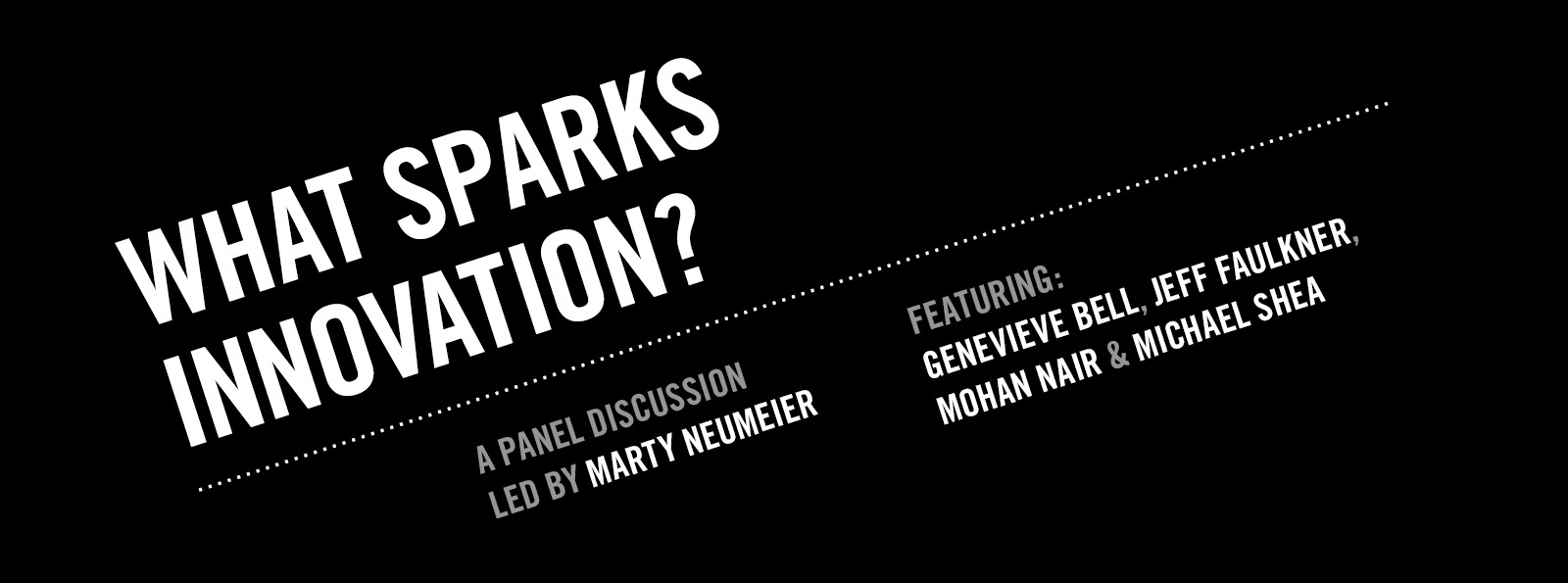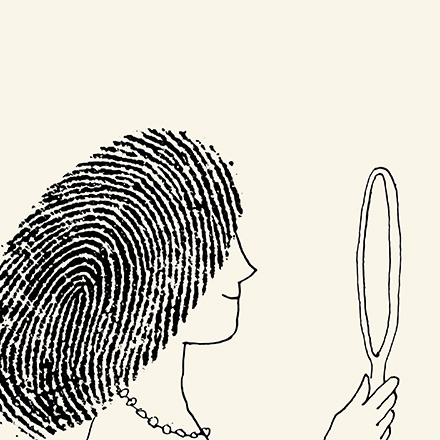What brings innovation to life?
“Don’t just make stuff that you think is cool,” Michael Shea tells would-be innovators, “make things that will change people’s lives.” Michael is a creative director known especially for his work at Nike, where he was a creative director at the company’s Innovation Kitchen, and global director of communication and storytelling for the Design Center of Excellence. He has since co-founded the firm School+Jackson, and will be panelist in the “What Sparks Innovation?” conversation, presented by Liquid on October 7.
About Michael.
Michael lives in Portland, grew up in the Midwest, and was influenced by the mid-century architecture and design of Palm Springs, where he lived as a teenager. After studying design, art, and industrial technology at Cal State Chico, he earned his Masters in Design degree from North Carolina State University. Michael’s clients have spanned cultural institutions like the Smithsonian and The National Gallery of Art, together with notable consumer brands including Burton Snowboards, Levis, and Fender Guitar. We asked him for his thoughts on how innovation thrives.
The interview.
T: Tell us a bit about your years with Nike’s Innovation Kitchen. Looking back, what was the biggest thing you learned about sparking innovation?
M: My role was kind of an experiment, since I’m not formally a product designer or engineer. I was brought down there to help the teams craft stories around their work in the spirit of creating a higher hit ratio of internal adoption. There were case studies of how some pretty remarkable innovations never saw the light of day because they couldn’t sell them in. It can be a trap when innovators go to the “what” first, while forgetting about the why when selling their ideas. So I guess my biggest learning was two-fold: on one hand, innovation takes space, insight, a mandate, and adequate resources. On the other hand, it takes exceptional storytelling to help bring it to life. My job was to help the team get their innovations understood and supported through story.
T: People who work in branding, marketing, and storytelling that is created on behalf of businesses must relentlessly create. Our work shapes how a company is perceived by the world, and also helps the company calibrate its internal compass. Still: this work isn’t often viewed as “innovative” in the way that an invention or product design might be. What’s your take on the relationship between innovation and marketing?
M: Innovation doesn’t have any borders when it comes to creating it, or talking about it. Innovative marketing has the potential to do two things: inspire people to behave differently, and drive demand for things that can make a difference in people’s lives. A lot of innovative products out there might be new, but great marketing helps people understand why those products are new and better. A product without a voice or story is just an item. Products with great stories around them become ideas that people can rally around. True innovation lives firmly in the ideas business.
T: Thoughtfulness and meaning are qualities you talk about passionately. Something new can be innovative yet fairly meaningless. Beyond the bottom line: how do you decide which projects matter enough to warrant your devotion?
M: I disagree with the idea that something new can be innovative yet meaningless. If it’s meaningless, it’s probably not innovative. If it’s not new and better, most likely it’s not going to prove out to be an innovation. The “better” piece is what makes an innovation meaningful to people. When working the filtering process for what matters, the ideas that center on a true need and insight are the ones that generally make the cut. It all has to begin with who it’s for: the athlete, the consumer, the user, or the stakeholder in the market. At the end of the day, they are the ones who decide to agree with you or not. If a brand invents a new way of making something, it doesn’t mean anything unless what they’re making is better than what already existed.
T: Some people are radical innovators. Others foster environments that help these innovators explore, experiment, and succeed. What advice would you give each of them?
M: You’ve basically identified the two key partners in any legitimate innovation cycle: the creators and the benefactors. The creators need space, a mandate, and dedicated resources to be successful. It’s the benefactors’ job to provide that, because without those things, the creators can’t execute. When you can’t execute, innovation doesn’t exist. Ideas are great, but if you can’t put it out there, it’s a complete waste of time.
So my advice to creators is pretty simple: be an advocate for those that you serve. Don’t just make stuff that you think is cool, make things that will change people’s lives. To the benefactors, do your job by creating and protecting the space that creators need to do good work. Help them understand their role with a real mandate. Carve out the resources that they need to be iterative, creative, and free from the normal everyday pressures of the business.
When all of these measures are in place, history proves out that innovation thrives, which in turn moves the business forward. Innovation is hard work. It’s not just a box to be checked for shareholders and analysts. It’s a commitment to be OK with being uncomfortable for a minute. I always say that whenever a sales force is high-fiving after a product pitch, we’ve really wasted an opportunity!

What Sparks Innovation?
Panel discussion presented by Liquid Agency Featuring Genevieve Bell, Jeff Faulkner, Mohan Nair, & Michael Shea
Moderator: Marty Neumeier
Design Week Portland, 2014
Elizabeth Leach Gallery
417 NW 9th Avenue, Portland
Tickets are sold out.
Liquid Agency Open House
Featuring the Artwork of Kate Bingaman-Burt and a special listing party in the Liquid Space PDX Gallery: “Songs about money, emotions & objects.” Three custom mixtapes containing songs about money, emotions and objects will be available for listening and purchasing. Bring your favorite songs about these topics to share.
Liquid Agency
October 7, 4-7 pm
910 NW Hoyt Street, Portland
Beverages for both events are generously provided by Fort George Brewery.
Helpful Links
Elizabeth Leach Gallery

